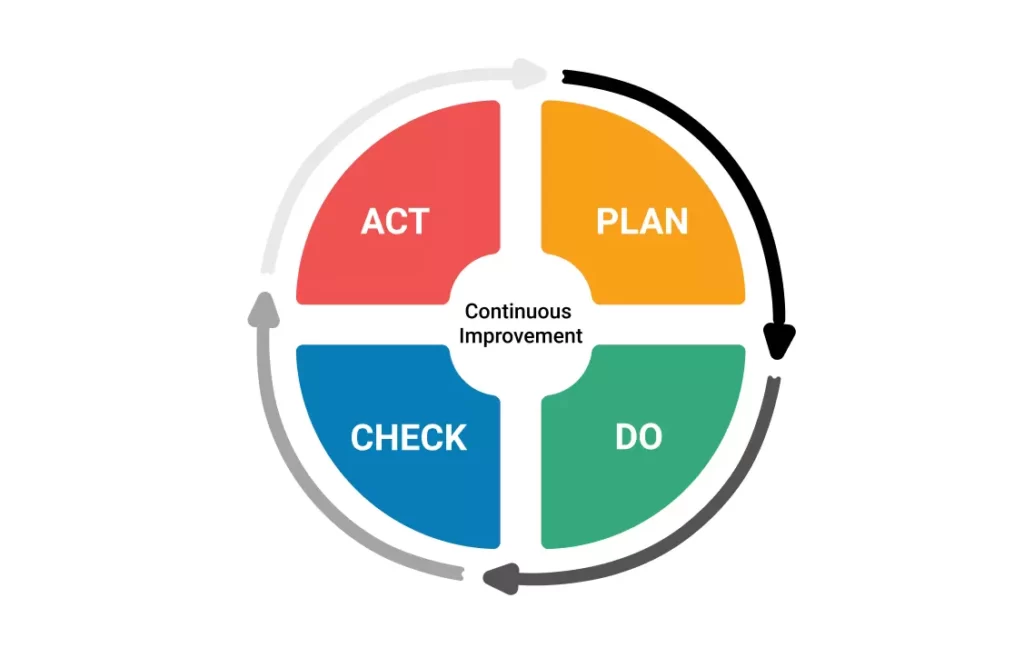What Is Evidence Based Decision Making?
In today’s data-driven world, evidence based decision making has become increasingly important for organizations to make informed and effective decisions. Evidence-based decision-making involves using data and evidence to inform decision-making processes, rather than relying on intuition or past experience alone. In this article, Iran Govah will explore what evidence-based decision-making is, its benefits, and how it can be implemented successfully.

Understanding Evidence Based Decision Making
Evidence-based decision-making involves using data and evidence to inform decision-making processes. This means that decisions are based on facts, rather than opinions or personal experiences alone. Evidence can take many forms, including research studies, surveys, customer feedback, and financial data.
One of the key benefits of evidence-based decision-making is that it helps to reduce bias and subjectivity in decision-making processes. When decisions are based on evidence, rather than personal biases or preferences, organizations can make more objective and rational decisions.
However, it is important to note that evidence-based decision-making is not a one-size-fits-all approach. Organizations must consider the type and quality of evidence available, as well as the context in which decisions are being made. For example, decisions made in a rapidly changing market may require different types of evidence than decisions made in a more stable market.
Benefits of Evidence-Based Decision-Making
Evidence based decision making offers numerous benefits for organizations, including:
- Improved Decision-Making: By using data and evidence to inform decisions, organizations can make more informed and effective decisions that are based on objective facts rather than subjective opinions or experiences.
- Increased Efficiency: Evidence-based decision-making can help organizations identify areas where they can improve efficiency, reduce costs, and maximize resources.
- Enhanced Innovation: Evidence-based decision-making (1) can help organizations identify new opportunities for innovation and growth, based on data and evidence.
- Improved Communication: By using evidence to inform decisions, organizations can communicate their decisions more effectively to stakeholders, as they can explain the rationale behind their decisions based on objective evidence.
Implementing Evidence Based Decision Making
Implementing evidence based decision making requires a structured approach that involves the following steps:
- Identify the Problem: The first step is to clearly define the problem or decision that needs to be made. This involves identifying the key factors that need to be considered and the desired outcomes of the decision.
- Collect Evidence: Once the problem has been identified, the next step is to collect evidence. This involves identifying and gathering data and evidence from various sources, including research studies, surveys, financial data, and customer feedback.
- Analyze Evidence: After collecting evidence, it is important to analyze it to identify patterns, trends, and insights. This may involve statistical analysis, data visualization, or other techniques to identify correlations or causal relationships.
- Make the Decision: Based on the analysis of the evidence, a decision can be made. It is important to consider the context in which the decision is being made, as well as the potential risks and benefits of different options.
- Monitor and Evaluate: After making the decision, it is important to monitor and evaluate its impact over time. This involves collecting data and evidence to measure the effectiveness of the decision and identify areas for further improvement.
Overcoming Barriers to Evidence-Based Decision-Making
While evidence based decision making offers numerous benefits, there are also several barriers that organizations may face when implementing this approach. These barriers include:
- Lack of Data: One of the biggest barriers to evidence-based decision-making is a lack of data. Organizations may not have access to the data they need to make informed decisions, or they may not know how to collect and analyze data effectively.
- Resistance to Change: Implementing evidence-based decision-making may require changes to existing processes and procedures, which can be met with resistance from employees or stakeholders who are resistant to change.
- Complexity: Collecting and analyzing data can be a complex process, which may require specialized skills or expertise. Organizations may need to invest in training or hiring new staff to overcome this barrier.
- Cost: Collecting and analyzing data can be expensive, particularly if the organization needs to invest in new technology or infrastructure to support evidence-based decision-making.
To overcome these barriers, organizations can take several steps, including:
- Invest in Data and Analytics: To overcome the barrier of a lack of data, organizations should invest in data and analytics capabilities, including technology and personnel, to ensure they have access to the data they need.
- Communicate the Benefits: To overcome resistance to change, organizations should communicate the benefits of evidence-based decision-making to stakeholders, including employees and customers. By highlighting the benefits, organizations can help to build support for this approach.
- Simplify the Process: To overcome the complexity barrier, organizations can simplify the process of collecting and analyzing data by adopting user-friendly tools and technologies. This can help to make the process more accessible to a wider range of stakeholders.
- Prioritize Investment: To overcome the cost barrier, organizations should prioritize investment in evidence-based decision-making in areas where it can have the greatest impact. By focusing on high-priority areas, organizations can ensure they are getting the most value from their investment.
Conclusion
Evidence-based decision-making is a powerful tool that can help organizations make more informed and effective decisions. By using data and evidence to inform decision-making processes, organizations can reduce bias and subjectivity, improve efficiency and innovation, and communicate decisions more effectively to stakeholders. While there may be barriers to implementing this approach, organizations can overcome these challenges by investing in data and analytics, communicating the benefits of evidence-based decision-making, simplifying the process, and prioritizing investment. By doing so, organizations can ensure they are making the best possible decisions based on objective facts and evidence.


